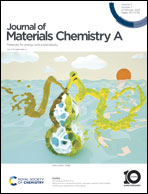Performance enhancement strategies of fibrous solar cells for wearable hybrid energy systems
Abstract
The rapid development of intelligent electronics in recent years gives birth to wearable electronic textiles. Fibrous solar cells (FSCs) are considered as promising energy storage systems for wearable electronic textiles since they are easy to integrate or weave into flexible textiles, which can adapt to various twisting or stretching deformations. Most studies of FSCs focus on improving the photoelectric conversion efficiency and output stability, as well as their own modular integration and integration with energy storage batteries to form wearable hybrid energy systems. This review focuses on discussing prospective strategies and methods for enhancing the stability and reliability of FSCs and reviews recent advances in this important area. First, the technical advantages of fiber geometry, the factors and mechanisms that affect the stability, and the development history of FSCs are systematically summarized and analyzed. Then, prospective strategies to improve the conversion efficiency and stability of FSCs as well as strategies of using FSCs to construct wearable hybrid energy systems are emphatically summarized and discussed. Finally, the remaining challenges and technical difficulties that may hinder the performance improvement and large-scale production of FSCs are proposed, and the development opportunities of FSCs are prospected.

- This article is part of the themed collection: Journal of Materials Chemistry A Recent Review Articles


 Please wait while we load your content...
Please wait while we load your content...